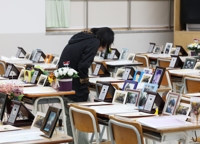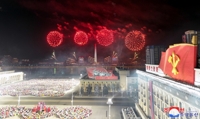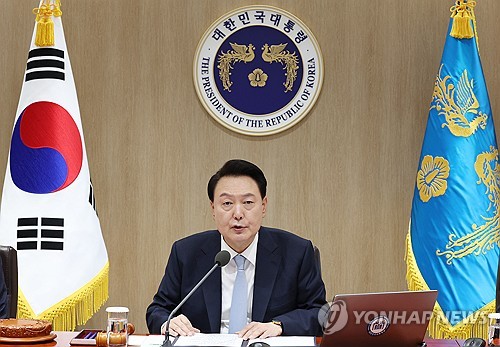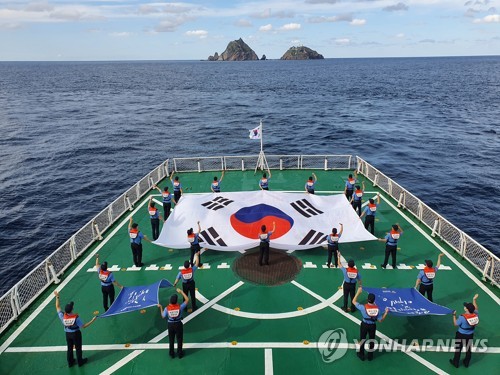(3rd LD) N. Korea fires 2 unidentified projectiles into East Sea: JCS
(ATTN: ADDS latest info in paras 1-5)
By Oh Seok-min
SEOUL, Aug. 16 (Yonhap) -- North Korea fired two unidentified short-range projectiles into the East Sea on Friday, South Korea's military said, the sixth such launch in about three weeks.
The firing came shortly after a warning that North Korea could end dialogue with South Korea in apparent protest against the Seoul-Washington military exercise and Seoul's defense plan, announced earlier this week, outlining its five-year major weapons procurement projects.
The two projectiles were fired at around 8:01 and 8:16 a.m. from its eastern coastal county of Tongchon in Kangwon Province into the East Sea, and both flew around 230 kilometers at a maximum altitude of 30 km and a top speed of around Mach 6.1, according to the Joint Chiefs of Staff (JCS).
"Our military is monitoring the situation in case of additional launches while maintaining a readiness posture," the JCS said, adding that South Korean and U.S. intelligence authorities are analyzing their exact type.
After holding an emergency National Security Council meeting presided over by national security adviser Chung Eui-yong, the presidential office Cheong Wa Dae called on the North to stop such firings that could heighten military tensions on the Korean Peninsula.
In Washington, a senior U.S. government official said the United States is aware of the missile launch and closely monitoring the situation in cooperation with its allies.

This composite photo, released by the North's Korean Central News Agency on Aug. 11, 2019, shows the test-firing of missiles, one day after their launch from the eastern North Korean coastal city of Hamhung. (For Use Only in the Republic of Korea. No Redistribution) (Yonhap)
Friday's launch came six days after North Korea fired two projectiles believed to be short-range ballistic missiles into the East Sea.
Though neither North Korea nor the South Korean military identified their exact type, experts have said they bear outward similarities to the U.S.' Army Tactical Missile System (ATACMS), a surface-to-surface missile system manufactured by Lockheed Martin.
It is also the sixth such launch since July 25 when the North fired two newly developed short-range missiles, or its version of Iskander codenamed KN-23, and the eighth tests this year that started in May, after a 17-month hiatus.
The latest firings came along with harsh rhetoric against South Korea.
The North's Committee for the Peaceful Reunification of the Country issued a statement early Friday in which it lashed out at President Moon's address a day earlier marking Liberation Day from Japan's colonial rule, claiming that his usage of such terms as "worrisome acts" and "provocation" by North Korea is "reckless."
In the speech, Moon said despite a series of "worrying actions taken by North Korea recently, the momentum for dialogue remains unshaken ... Compared to the past when the whole Peninsula experienced turbulence whenever North Korea engaged in a provocation, the situation has definitely changed."
While noting that South Korea "possess defense capabilities that are even stronger (than North Korea), Moon pledged his commitment to advancing "dialogue and cooperation" with North Korea for peace and prosperity.
In the statement, Pyongyang also denounced South Korea's ongoing joint military exercise with the U.S. and its mid-term defense plan where Seoul detailed its major defense projects for the 2020-2024 period, claiming that all of them "are aimed at destroying" the North.
"We have nothing to talk any more with the South Korean authorities nor have any idea to sit with them again," the statement read.
North Korea has repeatedly issued warnings against the combined military exercise, threatening that it would seek "a new way" rather than engagement if Seoul goes ahead with such a rehearsal for invasion.
In a letter to U.S. President Donald Trump last week, North Korean leader Kim Jong-un also voiced his displeasure with the joint military exercises.
Expressing his "small apology for testing the short-range missiles," Kim told Trump that such saber-rattling would stop when the exercises end, according to Trump.
Saying that such drills are defensive in nature, Seoul and Washington said that the ongoing exercise that kicked off in earnest on Monday for a 10-day program is meant to test South Korea's operational capabilities for the conditions-based transition of wartime operational control of combined forces from Washington to Seoul.
Under U.N. Security Council resolutions, the North is banned from test-firing ballistic missiles.
Trump has brushed off recent tests by the North and boasted of his good relations with Kim, stressing that Pyongyang has not tested long-range missiles or nuclear devices in the current phase of peace efforts.
Kim expressed his will to resume talks with the U.S. on its nuclear programs "as soon as" the joint military exercise is over, according to the U.S. president. The negotiations have been stalled since the no-deal Hanoi summit in February.
During their surprise meeting in the inter-Korean border village of Panmunjom at the end of June, Trump and Kim agreed to resume their nuclear talks, and the U.S. has suggested working-level talks.
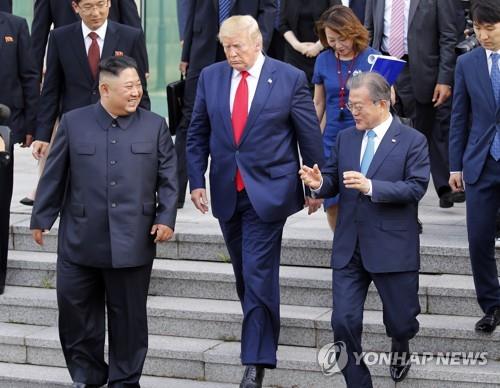
North Korean leader Kim Jong-un (L) walks with U.S. President Donald Trump (C) and South Korean President Moon Jae-in toward the northern side of the truce village of Panmunjom in the Demilitarized Zone, which separates the two Koreas, on June 30, 2019, after holding talks with Trump at the Freedom House on the village's southern side. (Yonhap)
graceoh@yna.co.kr
(END)
-
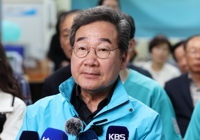 Ex-PM suffers crushing defeat
Ex-PM suffers crushing defeat -
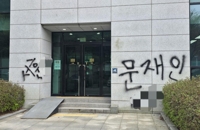 Man in his 40s nabbed for spray-painting slurs toward ex-President Moon
Man in his 40s nabbed for spray-painting slurs toward ex-President Moon -
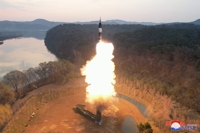 Defense chief says N. Korea's hypersonic missile 'unsuccessful' in last-stage glide flight
Defense chief says N. Korea's hypersonic missile 'unsuccessful' in last-stage glide flight -
 Police catch 1,681 over alleged election law violations
Police catch 1,681 over alleged election law violations -
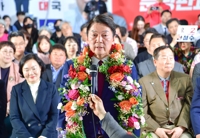 PPP lawmaker says entire Cabinet should resign over general elections defeat
PPP lawmaker says entire Cabinet should resign over general elections defeat
-
 Defense chief says N. Korea's hypersonic missile 'unsuccessful' in last-stage glide flight
Defense chief says N. Korea's hypersonic missile 'unsuccessful' in last-stage glide flight -
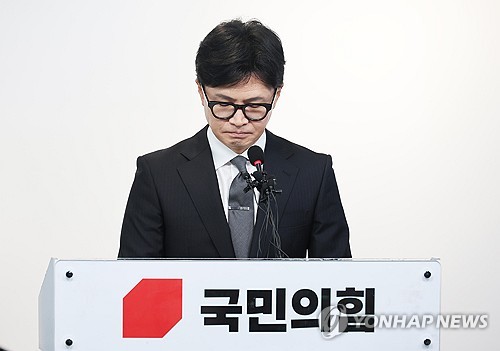 Ruling party leader resigns following election defeat
Ruling party leader resigns following election defeat -
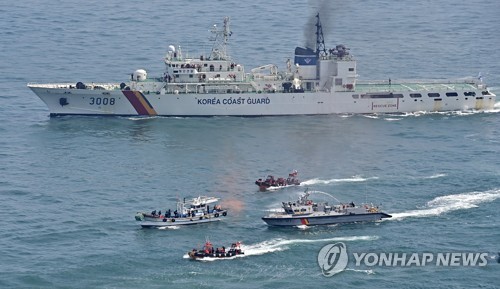 Yoon orders firm response to illegal fishing by Chinese vessels
Yoon orders firm response to illegal fishing by Chinese vessels -
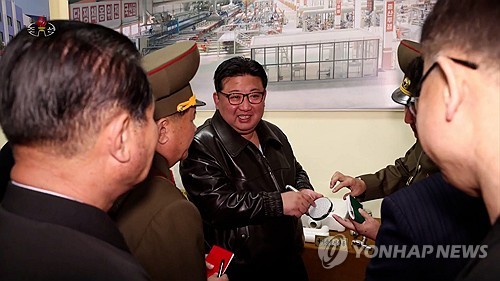 N.K. leader vows to deal 'death-blow' to enemy in event of confrontation: KCNA
N.K. leader vows to deal 'death-blow' to enemy in event of confrontation: KCNA -
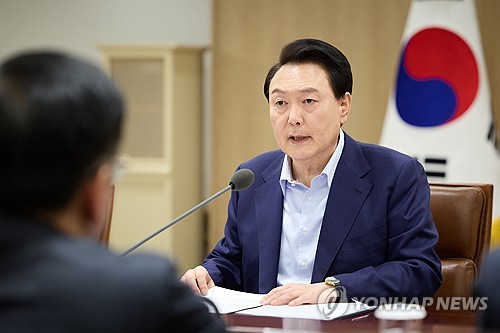 Yoon presides over emergency meeting on Mideast crisis
Yoon presides over emergency meeting on Mideast crisis
-
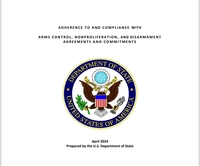 N. Korea has capability to genetically engineer biological military products: U.S. report
N. Korea has capability to genetically engineer biological military products: U.S. report -
 Defense chief says N. Korea's hypersonic missile 'unsuccessful' in last-stage glide flight
Defense chief says N. Korea's hypersonic missile 'unsuccessful' in last-stage glide flight -
 (LEAD) Yoon to address election defeat Tuesday
(LEAD) Yoon to address election defeat Tuesday -
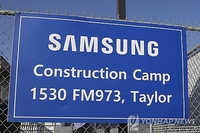 (3rd LD) U.S. unveils US$6.4 bln in CHIPS Act grants to Samsung Electronics
(3rd LD) U.S. unveils US$6.4 bln in CHIPS Act grants to Samsung Electronics -
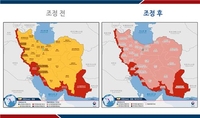 S. Korea issues special travel advisory for Iran amid escalating Mideast tensions
S. Korea issues special travel advisory for Iran amid escalating Mideast tensions

















